The birth of electric motion
As we celebrate the bicentenary of Faraday's invention of the electric motor in 1821, our Head of Heritage and Collections, Charlotte New, takes us on a voyage through time to rediscover this history-defining moment.
On Monday 3 September 1821, in the small Royal Institution basement laboratory lit by candlelight, a young Michael Faraday made a remarkable discovery: for the first time, continuous mechanical movement was generated from electricity – a small but significant step in the history of power and a turning point in Faraday’s career.
The story begins a year earlier when a Danish polymath, Hans Christian Ørsted, discovered the phenomenon of electromagnetism. He had been experimenting at the University of Copenhagen with copper wire and electricity, joining the two together.
When he happened to pass the wire over the top of a compass, Ørsted noticed that the needle on the compass moved perpendicular to the copper wire. He had shown that a wire carrying an electrical current would affect a magnetised needle. Ørsted wrote up his findings and sent copies to every scientific journal of note.
At this time, Michael Faraday was working away at the Royal Institution undertaking laboratory supervision, lecturing and acting in the capacity of Superintendent of the House (effectively managing the institution’s day-to-day functions). He was asked to review, for the ‘Annals of Philosophy’ , all the current literature and experimentation on electromagnetism.
To undertake this review, he took it upon himself to recreate Ørsted’s experiment. In order to further understand what was happening in front of him, Faraday continued to experiment, making new equipment and trying to make sense of the results.
And so it happened that on 3 September 1821, Faraday found that he could make a wire carrying an electric current move around a magnet. He called this phenomenon ‘electromagnetic rotations’ producing the world’s first electric motor as a result.

Photograph of Michael Faraday taken by John Watkins (about 1861)
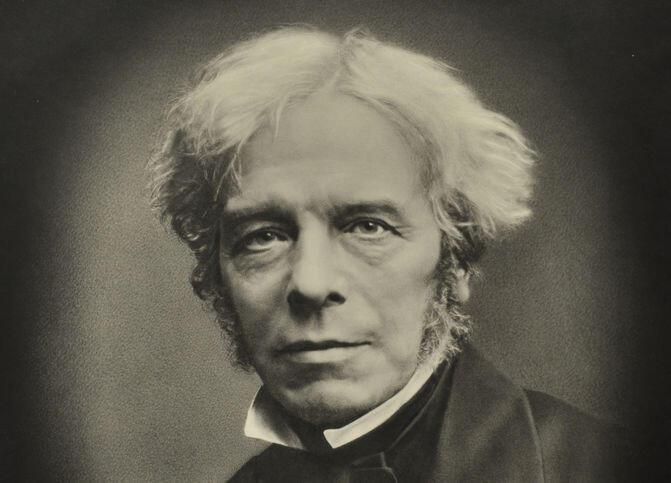
Faraday meticulously took notes of his experiments in his scientific journal, noting:
"Arranged a magnet needle in a glass tube with mercury about it and by a cork, water, etc. supported a connecting wire so that the upper end should go into the silver cup and its mercury and the lower move in the channel of mercury round the pole of the needle. The battery arranged with the wire as before. In this way got the revolution of the wire round the pole of the magnet. The direction was as follows, looking from the above down."
Forever on a quest to learn and clearly realising this was only the beginning of his experimentation on the subject, he also noted "Very satisfactory, but make more sensible apparatus".
On the following day, Tuesday 4 September, Faraday continued his work improving the apparatus and repeating the experiment. He noted:
"Apparatus for revolution of wire and magnet. A deep basin with a bit of wax at bottom and then filled with mercury, a magnet stuck upright in wax so that pole just above surface of mercury, then piece of wire floated by cork, at lower end dipping into mercury and above into silver cup as before, and confined by wire or capillary attraction from leaving the M. Pole."
Faraday wrote up his discovery for publication in the 'Quarterly Journal of Science'. This was not without difficulty though, as it was suggested by others that he had plagiarised some of William Hyde Wollaston’s electromagnetic work in his paper. A close friend of Humphry Davy and a Manager at the Ri, Wollaston declined to pursue the matter when Faraday wrote to him to apologise for any misunderstanding.
Wollaston replied:
"You seem to me to labour under some misapprehension of the strength of my feelings upon the subject to which you allude.
"As to the opinion which others may have of your conduct, that is your concern, not mine; and if you fully acquit yourself of making any incorrect use of the suggestions of others, it seems to me that you have no occasion to concern yourself much about the matter."
Faraday sent copies of his scientific paper along with pocket-sized models of his device to scientific colleagues all over the world so they too could witness the phenomenon of electromagnetic rotations themselves.
This was just the beginning of Faraday’s work on electricity and magnetism, almost exactly 10 years later in 1831, Faraday developed electromagnetic induction and generation – confirming his place in scientific history.
This historical film from the 1950s details the scientific researches of Michael Faraday undertaken at the Royal Institution and features Nobel Prize winner (and Director of the Ri) Sir William Lawrence Bragg demonstrating a Faraday cage in our iconic theatre.
Happy 200th birthday to the electric motor! ⚡️ On this day in 1821, right here at the Royal Institution, Michael Faraday kick-started the technology we find in heaps of common objects today - from computers to fridges. Watch as @SciJem recreates this history-defining experiment. pic.twitter.com/Apgnhrom7v — Royal Institution (@Ri_Science) September 3, 2021
More about Michael Faraday
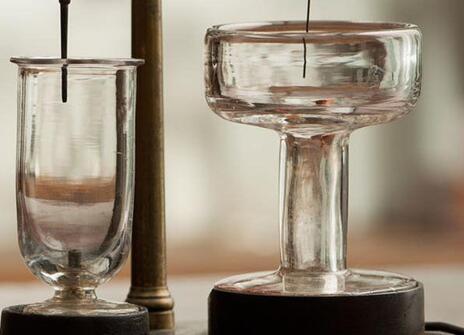
History of science
Michael faraday's electric magnetic rotation apparatus (motor).
The first surviving Faraday apparatus, dating from 1822, demonstrates his work in magnetic rotation. Faraday used this mercury
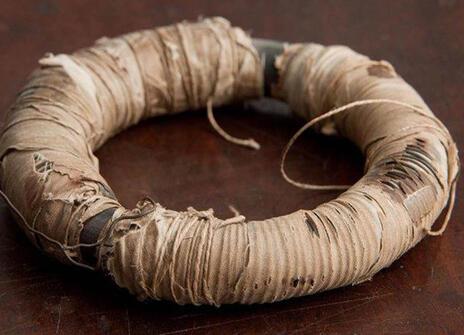
Michael Faraday's ring-coil apparatus
Made by Faraday in his laboratory in the basement of the Royal Institution in August 1831, thus creating the first ever electric
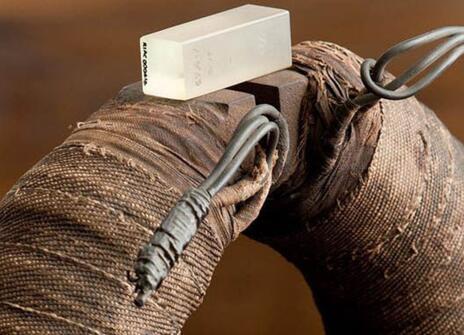
Michael Faraday's magneto-optical apparatus
The electromagnet used by Michael Faraday in a ground-breaking experiment showing that light and glass are affected by magnetism
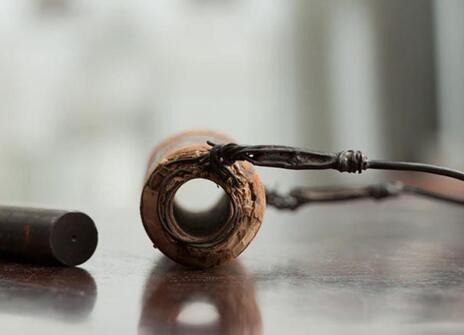
Michael Faraday's generator
Faraday created the first transformer in August 1831. A few months later he designed and made this simple piece of apparatus
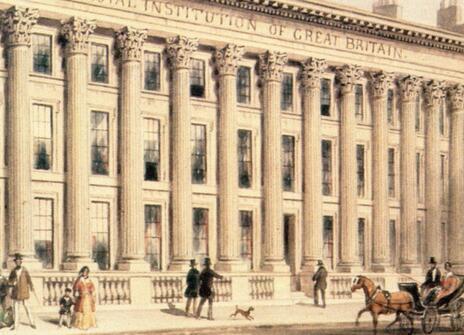
A tour of Michael Faraday in London
A walk from the Royal Institution to Somerset House exploring Faraday's life, his intellectual network and his legacy.
- View Calendar
- General Information
- Group Visits
- The MegaZapper Electrical Show
- Virtual Visit
- Explore the Area
- Contact SPARK
- About SPARK
- Sign up for our E-Newsletter
- Work at SPARK
- Field Trips
- Teacher Resources
- Professional Development
- Wonder Awaits… For You!
- Press Releases
- Venue Rental
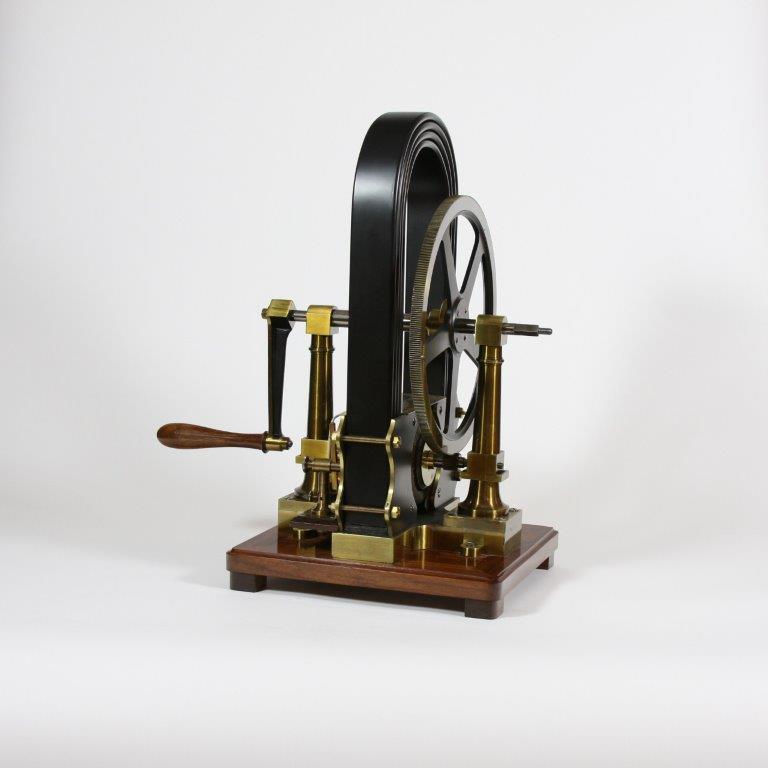
In the SPARK Museum, a trove of early electric motors
On display at The SPARK Museum of Electrical Invention are myriad devices that tell the exciting story of electrical history, including a string of devices that walk visitors from the early thought experiments of Michael Faraday to the electric induction motors of Nikola Tesla:
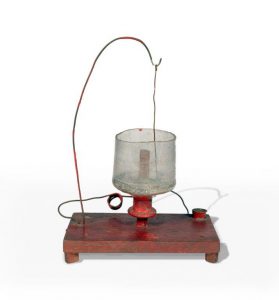
Henry Reciprocating Motor: Along with Michael Faraday, Joseph Henry is often referred to as a founding father of the electrical industry. In 1831, Henry created one of the earliest machines to produce motion from electromagnetism. Also one of the earliest electric motors, Henry’s device consisted of a long electromagnet perched on a pole, rocking back and forth from polarity changes caused by the magnet connecting with battery leads on each side. Henry’s work was the foundation for Thomas Davenport’s 1834 electric motor, which was used to operate model cars and trains. One of the two electromagnets from Henry’s original machine is on display at The SPARK Museum.
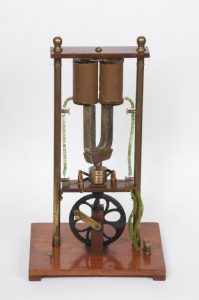
Pixii Dynamo: In 1832, Frenchman Hippolyte Pixii used Faraday’s principles to build the first direct current dynamo, or electrical generator. The device consists of a permanent magnet spun around by use of a hand-operated crank. As the magnet rotates, its poles swing by a piece of iron wrapped in wire, producing small pulses of alternating current with each passing. To convert the pulses into direct current, Pixii developed what’s known as a commutator. The Pixii Dynamo, the first device to generate both AC and DC, is the actual patent model submitted by Pixii. It’s truly a one-of-a-kind item.
Gramme Dynamo: In 1871, Zenobe Theophile Gramme invented his industrial-strength dynamo, taking the devices from the level of electronic experimentation in Pixii’s day to the level of productive machinery. Gramme’s invention was the first to be used for manufacturing and farming, and together with French engineer Hippolyte Fontaine, Gramme founded a factory to produce the machine and several other devices. Even today, the Gramme dynamo serves as the basis for the design of many direct-current electric motors.
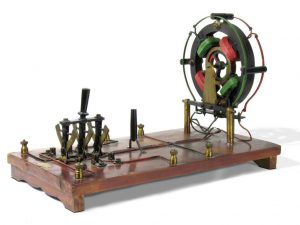
Yes, all of these amazing devices are part of the massive display at our science and history museum in Bellingham, WA. Where else, outside of the Smithsonian in the other Washington, can you see such an extensive collection of electrical history?
What are you waiting for? Come check out The SPARK Museum of Electrical Invention this weekend.
The National MagLab is funded by the National Science Foundation and the State of Florida.
Faraday Motor – 1821
Few inventions have shaped technology as much as the electric motor, but the very first version — the Faraday motor — didn't look anything like the modern motor.
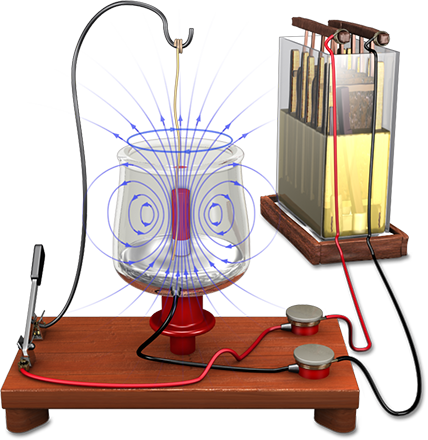
Self-taught British scientist Michael Faraday (1791 – 1867) built the first primitive motor about 1821, shortly after the discovery that an electric current produces a magnetic field.
His motor featured a stiff wire in a container of mercury (a metal that is liquid at room temperature and an excellent conductor) and a permanent bar magnet in the center of the container. He sent electricity through the wire and created a magnetic field around it. This field interacted with the field around the magnet and caused the wire to rotate around the magnet.
Even though it had no practical application, Faraday's invention was the first step in the evolution of the electric motor.
Other scientists quickly made improvements on it. A few months later, British physicist William Sturgeon developed the first rotary electric motor, a forerunner of the present-day direct-current motor.
More Stories

Torsion Balance – 1785
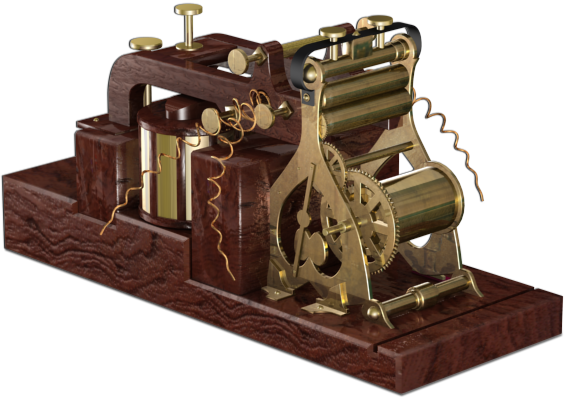
Morse Telegraph – 1844
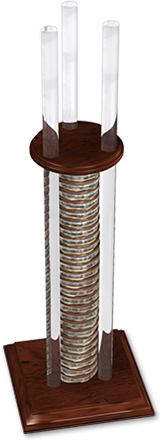
Voltaic Pile – 1800
- Engineering

How Faraday Invented The Motor And Annoyed His Mentor
Why would inventing a motor irritate anyone? And how did Faraday invent the motor in the first place? Well, I’ll tell you and along the way I will talk about a strange theory of spiraling currents, a misunderstanding of electromagnetic forces, and a useless motor.

Table of Contents
Oersted’s discovery, humphry davy and faraday, faraday’s 1821 experiment, why faraday’s motor was controversial, video script download.
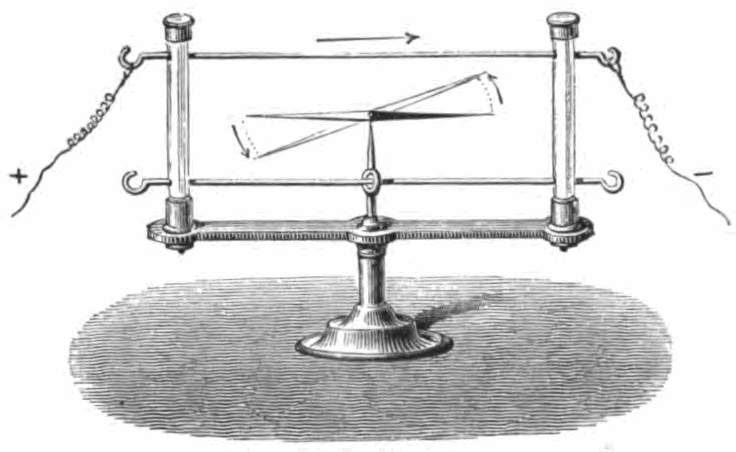
In 1820, a Danish man named Oersted made a remarkable discovery. When current runs through a wire it can make compass point in a circle around the wire! Now a compass is just a thin magnet on a pivot, so Oersted had proved that electricity and magnetism are linked.
What was incredibly confusing to people was that the current went a straight line and the magnets made circles around the wire. Oersted’s solution was that maybe the current was really spiraling down the wire.
He even made it more complex then that, where a positive current spiraled one way and moves the north end of the compass and a negative current spiraled the other way and moves the south end of the compass! Whew.
Humphry Davy and Farada y
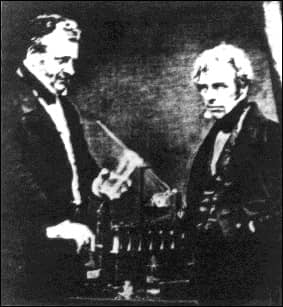
This brings us to England and men named Michael Faraday and his mentor Humphry Davy .
Humphry Davy was a famous Chemist and laughing gas aficionado who was arguably the most famous scientist in all of Europe at the time. Eight years previously, Davy had injured his eye and hired Michael Faraday, a young, uneducated and poor bookbinder’s apprentice as his assistant.
By 1820, Davy was promoted to president of the Royal Institution of London and Faraday had been promoted to the position of “Chemical Assistant” and was conducting some of his research independently of Davy.
Both Davy and Faraday (and frankly, every other scientist in Europe) heard about Oersted’s experiment and tried to figure out what it meant. Davy wrote his brother that, “I have ascertained (repeating some vague experiments of Orsted’s) that the battery is a powerful magnet…I am deeply occupied in this.”
Notice that Davy got an important fact wrong about Orsted’s experiment. The battery is not a magnet! It is tempting to think it must be as it often is in a similar shape to a bar magnet and the + and – signs seem so similar to the N and S of a magnet.
In fact, the battery isn’t magnetic, but the current in the wire is. In April, Davy collaborated with his friend William Wollaston in this problem.
Wollaston had agreed with Oersted that the current must spiral down the wire. They spent many hours trying to come up with an experiment to demonstrate this spiraling motion, but to no avail.
Supposedly, Faraday heard some of their discussions but never found them interesting enough to put in his notebook.

In the summer of 1821, Faraday was asked to write a review of the latest developments in electricity for a journal.
Through painstaking experiments Faraday determined that the wire wasn’t attracting either end of the magnet but instead orienting the entire magnet. He also determined that the force was purely circular around the wire not spiraling as Oersted thought.
He decided that, strange as it may seem, the current seemed to travel straight down the wire and somehow it made a circular force on a magnet around the wire.
In return, Faraday also postulated that a magnet also made a circular force on a wire around it. In other words, “a wire ought to revolve round a magnetic pole and a magnetic pole round the wire”.
Faraday began looking for a way to demonstrate that a current carrying wire will feel a force in a circle around a magnet.
On September 3rd, 1821 he created a simple experiment in his laboratory to demonstrate this force. He had a wire drop down on a cup full of mercury (mercury is a conducting fluid) with a permanent bar magnet in the center.
When he closed the switch the wire spun continuously. Supposedly, Faraday shouted, “There they go! There they go! We have succeeded at last!”
Technically, Faraday had just invented the electric motor as an electric motor is a device that changes electrical energy into motion. Of course, it wasn’t a particularly practical motor as it didn’t do any useful work (unless you want to electrically stir mercury).
Luckily, Faraday didn’t invent the motor to do any work. He invented it to demonstrate that the current moves straight down the wire and the magnetic force is circular around the wire.
As a motor, it was useless, as a demonstration of the nature of magnetic fields it was quite efficient.
Faraday published his work on October 1 st , 1821 to great acclaim. But within a week, he heard rumors that people were saying he plagiarized his material. The person shouting the loudest was his former boss and mentor, Humphrey Davy!
Faraday wrote to Wollaston, “I am anxious to escape from unfounded impressions against me and if I have done any wrong that I may apologize for it.” Wollaston wrote back and claimed to be unoffended; “you have no occasion to concern yourself much about the matter.” However, Wollaston didn’t publically defend Faraday and Davy publically attacked him.
It is hard to know, almost 200 years after the fact, why people did what they did and how they felt about it.
Most modern researchers feel that Davy was jealous of his protégée’s success and felt that Faraday was too low class and uneducated to be an independent researcher.
Davy was from a middle class background but had been knighted as a baron in recognition of his scientific work. Therefore Davy might have been class conscious in a way that a person who has risen far from middle class beginnings could be.
However, it is also possible that Davy felt justified in his anger. Faraday was a person that Davy had plucked from obscurity and he did not give credit to his benefactor.
And it is true that Davy and Wollaston had been trying to make a spinning device before Faraday did (although with a different motivation). Finally, it isn’t clear that Davy really understood what Faraday was proving with his experiments.
Davy’s brother stated that his objections to Faraday were “an act of justice to Dr. Wollaston”, and it is quite possible that Davy felt that way for the rest of his life.
In May of 1823, Faraday was nominated to be a fellow of the Royal Institute to the strong objection of Davy (the secret vote was nearly unanimous with only one dissenter, probably Davy).
In 1826, Davy fell very ill from using too much laughing gas or from inhaling dangerous chemicals in the laboratory and resigned from his job as a Chemist. Davy passed away three years later.
Meanwhile, Faraday was eager to continue his studies of electricity but instead he was basically forced by the government to study how to make better optical glasses (a study that he found particularly fruitless, stating that the only results were his own “nervous headaches”). Therefore, Faraday was unable to return to electricity until 1831.
The first person to really take Faraday’s idea to the next level was a newly retired soldier and boot maker named William Sturgeon. Sturgeon actually invented one of the first practical motors in 1834.
First, however, he focused on another thing Faraday mentioned in his paper, that a helix of wire acts like a bar magnet.
Video Script
Related posts, how electricity was discovered with a cool static electricity demo.
What does Electricity have to do with jewelry? I’ll tell you and along the way…
How a Leyden Jar Works
Wait? How did a jar of water shock anyone? And why? Well, I’ll tell you…
History of the Lightning Rod: Ben Franklin Invented the Lightning Rod And It Terrified & Offended People!
“Why did Ben Franklin invent the lightning rod and how does the lightning rod work?…
How Faraday Escaped Poverty With Luck
What kind of luck did a brilliant scientist like Michael Faraday need to succeed? It…
1 thought on “How Faraday Invented The Motor And Annoyed His Mentor”
Pingback: History of Maxwell’s Equations: #1 Gauss’s Law - Kathy Loves Physics
Leave a Comment Cancel Reply
Your email address will not be published. Required fields are marked *
Save my name, email, and website in this browser for the next time I comment.

By Richard Dunn on 3 September 2021
A small revolution: michael faraday and the origins of the electric motor.
The year 1821 was a good one for Michael Faraday (1791-1867). Having worked as an assistant at the Royal Institution in London for some years, he was appointed superintendent of the Institution’s house in May and married Sarah Barnard the following month. Then in September he made the first of many discoveries for which he would later become famous.
Faraday’s breakthrough arose in the wake of Hans Christian Ørsted’s announcement in 1820 that a wire carrying an electric current caused a magnetic compass needle to deflect. This was startling news to natural philosophers, who had assumed that electricity and magnetism were distinct phenomena.

Throughout Europe, researchers began investigating the strange effect. In France, André-Marie Ampère developed a mathematical analysis of what he called electrodynamics, while in England both Humphry Davy , Faraday’s boss at the Royal Institution, and William Hyde Wollaston began their own researches, as did many others.
In fact, by mid-1821, so much new work had been published about what came to be called electromagnetism that Richard Phillips , editor of the Annals of Philosophy , asked Faraday to review the copious literature and write a historical account. It was in doing this that Faraday made his great discovery.
Faraday always kept detailed notes of his work in the Royal Institution’s basement laboratory. These help us understand the very practical way he attacked problems, including those posed by Ørsted’s discovery.
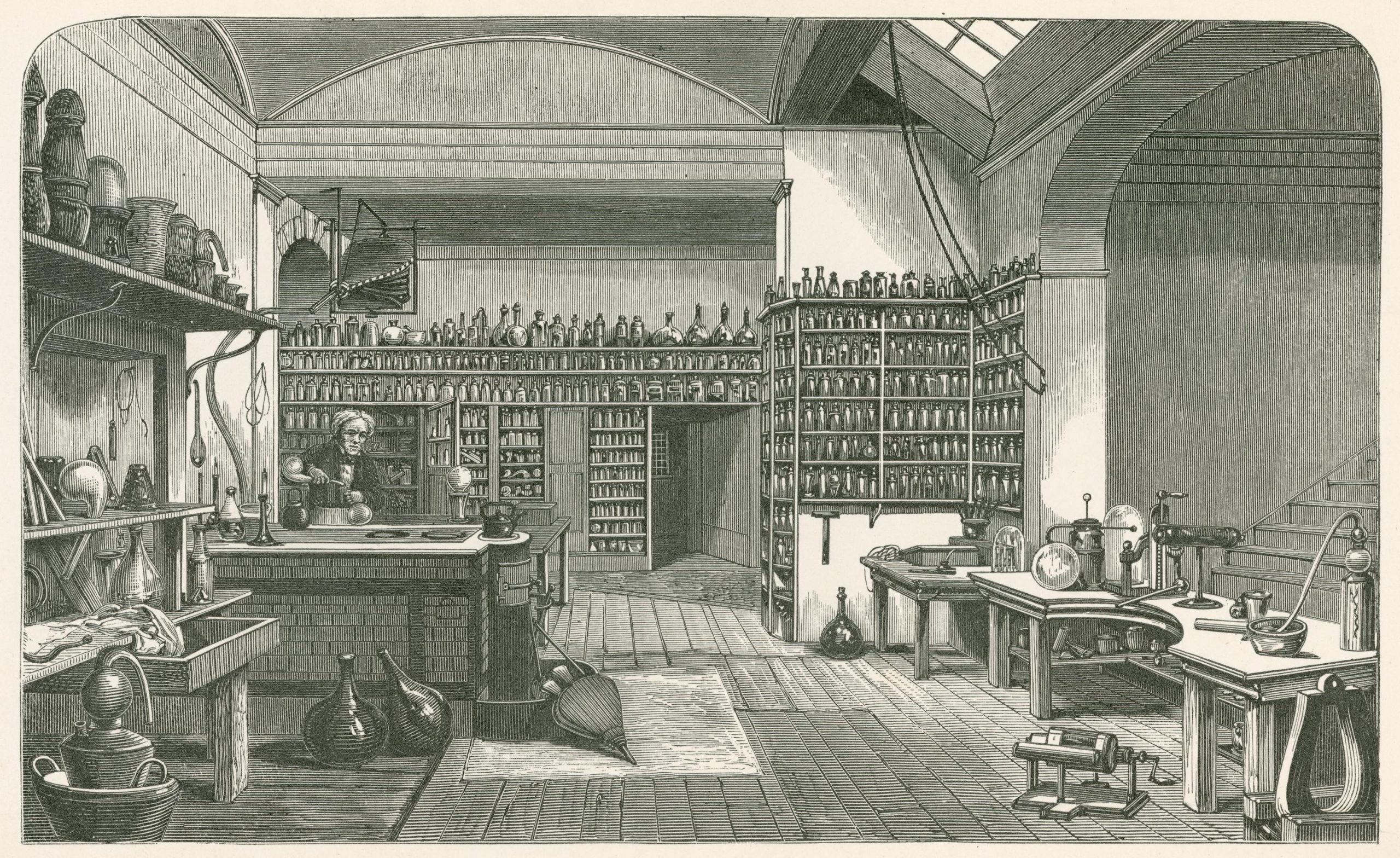
It was on 3 September 1821 that Faraday made his big breakthrough. After repeating some of the experiments previously published and devising new ones as his thinking progressed, his notes record that he:
Arranged a magnet needle in a glass tube with mercury about it and by a cork, water, etc. supported a connecting wire so that the upper end should go into the silver cup and its mercury and the lower move in the channel of mercury round the pole of the needle. The battery arranged with the wire as before. In this way got the revolution of the wire round the pole of the magnet.
‘Very satisfactory’, he added modestly.
He had shown what no-one else had considered, that the motion produced by the interaction between an electric current and a magnetic field was circular rather than linear.
He continued working on the problem the following day, hoping to produce an apparatus that would illustrate what he called ‘electromagnetic rotations’.
The result was a device that rotated continuously without human intervention, thus successfully demonstrating the transformation of electrical energy into mechanical energy ; in other words, the principle behind the electric motor.
Ingeniously, the kit he designed was portable and by November he was sending demonstration devices to other investigators.
To Faraday this was a great example of the advantages of a practical approach to solving scientific problems. Writing to Mary Somerville in 1833, he cited the 1821 discovery as evidence that his experimental method was far superior to the mathematical approach of Ampère and others.
Faraday quickly published his findings the following month and a description of the demonstration apparatus in January 1822 . But this led to conflict when Davy accused him of plagiarism and of failing to credit Wollaston, who had been investigating rotary motions for some time.
Although Faraday largely cleared himself of the charge, the incident strained his relationship with Davy and Faraday didn’t greatly pursue this research area until after Davy’s death.
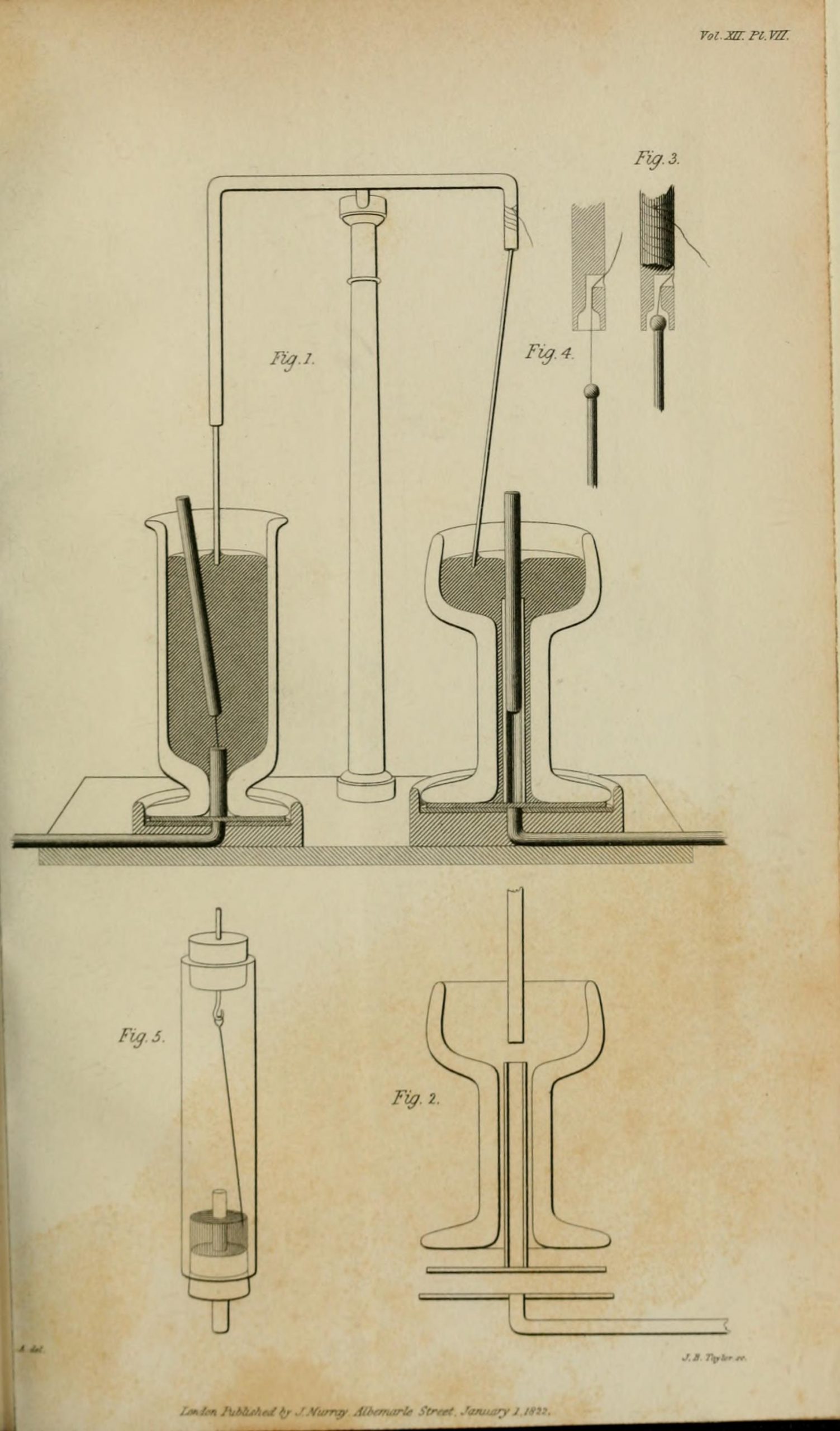
While Faraday’s discovery did not have an immediate practical application, it did prove to be a crucial step in the evolution of the electric motor , which bore fruit commercially by the end of the nineteenth century.
It also marked the beginning of a line of research that would bring Faraday enormous fame (including his appearance on Bank of England £20 notes between 1991 and 2000), particularly following his discovery of electromagnetic induction a decade later.
From small revolutions, it seems, great things would come.
Quarks, Spacetime, and the Big Bang
Faraday’s Experiments in Electricity and Magnetism
12.2. faraday’s experiments in electricity and magnetism #.
Michael and Sarah Faraday had no children, but he was an active uncle with his nieces and nephews often playing in his laboratory. They later remembered his reactions to successes and failures and their descriptions of an excited uncle contrasted with his always sober lab notebook recording of his results
By the time Faraday was working on his own, he knew all of chemistry. Davy had been a pioneer and was devoted to an atomistic-molecular view which rubbed off on Faraday who tended to think in terms of particulate matter all of his working life. His skills as an analytic chemist were second to none and he was in considerable demand for industrial consultation, fitting right into the goals of the Royal Institution. He created compounds of chlorine (discovered by Davy) and carbon, he isolated Benzine (and other organic molecules), liquefied chlorine, and discovered paramagnetism. He made important advances in alloying of steel. He was the go-to man in Britain for industrial chemistry innovation. Our concern is with this research into electricity and magnetism. Let’s consider each of his major discoveries in their historical order.
12.2.1. The Motor #
Oersted’s results in 1820 electrified the Davy-Faraday laboratory. Their lab was proficient in electro-chemistry and so they must have had many of the materials required in order to repeat Oersted’s experiment, and they did in great detail. It was Faraday who imagined that Oersted’s compass demonstrating a circular relationship around a current-carrying wire might imply that magnets might themselves feel circular force around a wire. He had the clever idea to construct such a device, making use of the fact that mercury is a good conductor of electricity, while still being a fluid.
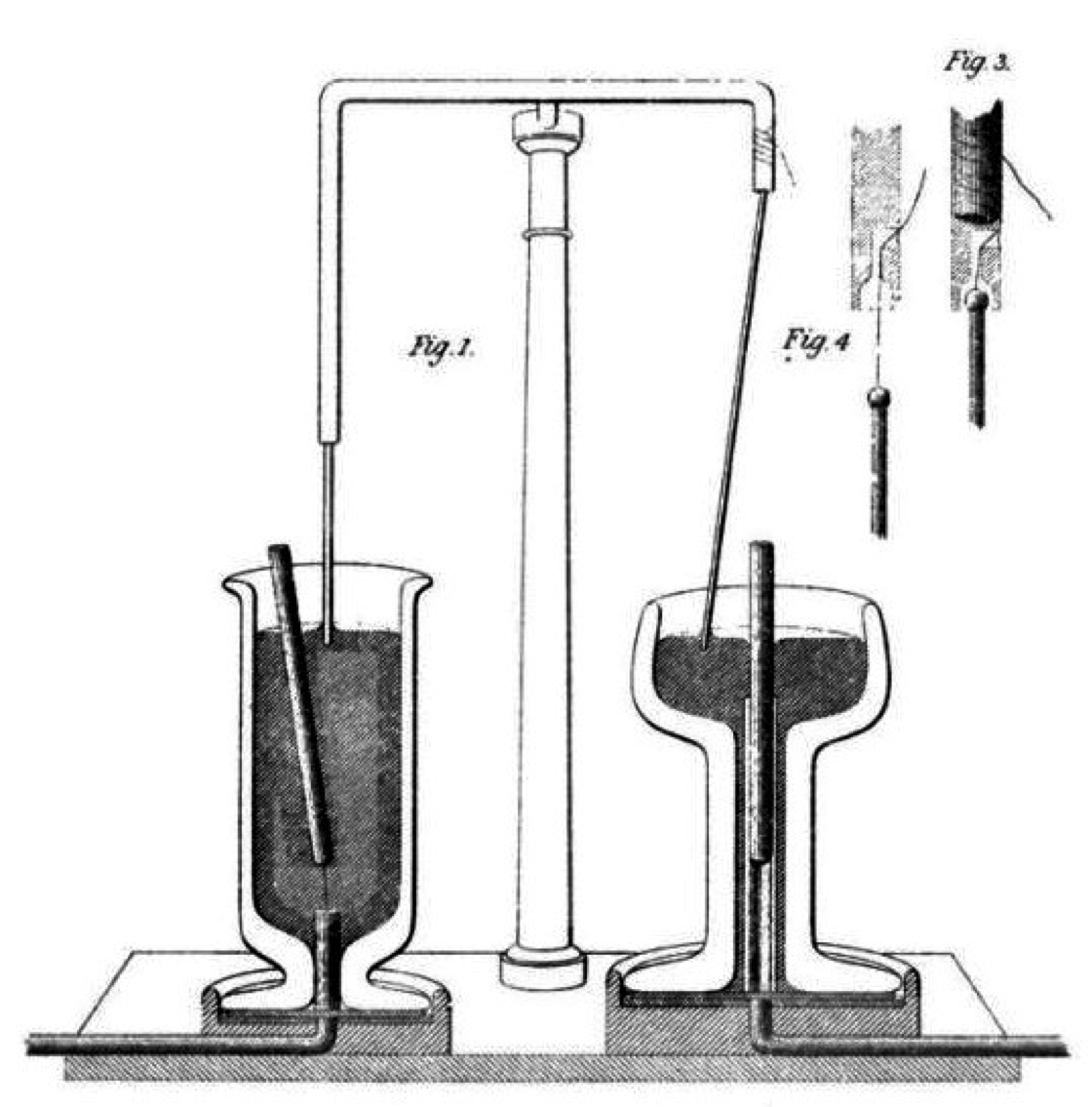
Fig. 12.2 Look at the left side of the figure above. The beaker of mercury has a bar magnet attached on a swivel at the bottom and at the top of the pool of liquid, a wire just breaks the surface. The wire running off the bottom to the left is attached to a battery and the vertical wire (ignoring the right hand part of the picture) is attached to the other terminal of the battery. When current flows through the mercury and the wire, the magnet swivels around its base in a circle around the upper wire. That’s a different demonstration of what Oersted observed – that a magnetic disturbance surrounds a current. Here the magnet swinging around the wire is experiencing that disturbance. #
The right hand picture shows is sort of the opposite. The magnet is fixed and has its own magnetic disturbance and the current-carrying wire is free to swivel…mechanical motion is induced in the current, where before mechanical motion is induced in the magnet. In each case (left and right) the circuit is completed through the mercury and the vertical wires.
Faraday connected the two experiments together as a show-and-tell stunt demonstrating the complimentary aspects of the same phenomenon: electrical energy is converted into mechanical motion, which is…the first motor. When you flip the switch on a wall and your garage door goes up, that’s a motor at work. The opposite of a motor is a generator, in which you convert mechanical energy into electrical energy. Your car has a generator that takes the mechanical energy of the engine and converts it into electrical energy to charge your battery.
Electrical energy can induce circular mechanical motion in a circuit.
Faraday knew that this was a significant discovery. In his notebook he wrote, “Very satisfactory, but make a more sensible apparatus.” But his 14 year old brother-in-law, who was in the lab with Faraday’s wife, Sarah noted later that they all danced around the apparatus and then went to the circus to celebrate. (He even prepared small hand-held versions of the Faraday Motor that he gave to colleagues for their amusement.) Faraday had none of the “Newton upbringing” and so his mind created different pictures. This idea of circular forces didn’t fit into a Newtonian force-world and in this regard, Faraday was completely on his own.
At this point, Faraday is still a young researcher—he was 29 years old—and he made a rookie mistake: he published his results without properly acknowledging people who had supported him and done preliminary work themselves. One of those was Davy, who appeared to never forgive him raising the issue to the level of a complaint of plagiarism. It was a gross overstatement and everyone understood that to be the case. Except, apparently, his former mentor who tried to block Faraday’s election to the Royal Society.
In 1821, young Faraday was asked to write an article which would summarize the all of the known electrical and magnetic phenomena. By this point, he was an extraordinarily careful experimenter and exceedingly clever with his notebooks, inventing an indexing system that he’d use his entire career. Instead of just reviewing the literature, he decided to repeat all of the experiments that had ever been done on electricity which for a genius like Faraday, led him into new territory.
Please answer Question 2 for points:
Generator or Motor?
12.2.2. His Day Job #
By 1825 Faraday was the director of the Royal Institute and inherited fund raising and financial affairs which were a considerable burden, as the place was nearly broke. Its purpose was originally to assist British industry with solutions which could be sold or which would increase efficiency in the nation’s factories. That contrasted with Faraday’s own personal desire to continue to do fundamental research, undirected by practical application. He found time to do so, but it was less than he would have liked. It was not until 1831—the year that Davy died—that he was able to return to basic research in electricity and magnetism. But he was always working on matters of public good and industrial progress. Basic research was inserted when he had time.
Faraday’s record-keeping was remarkable. Very early in his career he fell into the habit of numbering every paragraph in his logbook. Then periodically he would add to an index so he could efficiently refer back to his notes. He produced his massive reports on Electric- ity and Magnetism later in life which summarized his careful experi- ments, as well as his far-reaching conclusions. He maintained tens of thousands of numbered paragraphs in his career!
But one thing he had time for was pay-back. Remember his good fortune in life had come with an opportunity of a chance public lecture. Faraday devoted himself, throughout his life, as an engaging and entertaining presenter of science to the public. As director, he instituted a nearly weekly series on Fridays—always exactly one hour—and he created a Christmas series for children. The Royal Institution Christmas Lectures have been given every year (except during WWII) from a virtual “who’s who” of British scientists. Look at that overflow crowd in one of his last lectures below. Michael Faraday was the world’s first “Mr Wizard.”
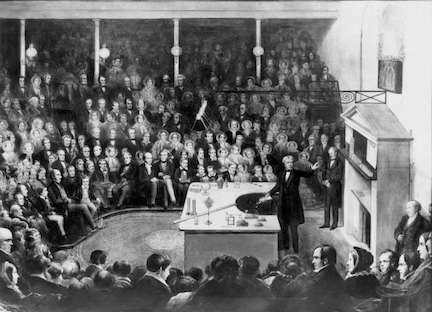

IMAGES
COMMENTS
In 1821 Faraday set about trying to understand the work of Ørsted and Ampère, devising his own experiment using a small mercury bath. This device, which transformed electrical energy into mechanical energy, was the first electric motor.
One of the first electric motors. Originally conceived by Michael Faraday to confirm and demonstrate Oersted’s observation that a magnetic field exists in a spiral around a conductor. A permanent magnet is placed vertically inside a container of mercury. A copper wire is suspended into the mercury from above.
Faraday meticulously took notes of his experiments in his scientific journal, noting: "Arranged a magnet needle in a glass tube with mercury about it and by a cork, water, etc. supported a connecting wire so that the upper end should go into the silver cup and its mercury and the lower move in the channel of mercury round the pole of the needle.
He conceived of the experiment as a way of confirming and demonstrating Hans Christian Oersted’s observation that a magnetic field exists in a spiral around a conductor. In Faraday’s device, a permanent magnet is placed vertically inside a container of mercury. A copper wire is suspended into the mercury from above.
Self-taught British scientist Michael Faraday (1791 – 1867) built the first primitive motor about 1821, shortly after the discovery that an electric current produces a magnetic field. His motor featured a stiff wire in a container of mercury (a metal that is liquid at room temperature and an excellent conductor) and a permanent bar magnet in ...
Nov 14, 2017 · Faraday began looking for a way to demonstrate that a current carrying wire will feel a force in a circle around a magnet. On September 3rd, 1821 he created a simple experiment in his laboratory to demonstrate this force. He had a wire drop down on a cup full of mercury (mercury is a conducting fluid) with a permanent bar magnet in the center.
In each case (left and right) the circuit is completed through the mercury and the vertical wires. Faraday connected the two experiments together as a show-and-tell stunt demonstrating the complimentary aspects of the same phenomenon: electrical energy is converted into mechanical motion, which is…the first motor.
Sep 3, 2021 · After repeating some of the experiments previously published and devising new ones as his thinking progressed, his notes record that he: Arranged a magnet needle in a glass tube with mercury about it and by a cork, water, etc. supported a connecting wire so that the upper end should go into the silver cup and its mercury and the lower move in ...
In each case (left and right) the circuit is completed through the mercury and the vertical wires. Faraday connected the two experiments together as a show-and-tell stunt demonstrating the complimentary aspects of the same phenomenon: electrical energy is converted into mechanical motion, which is…the first motor.
Faraday’s own accounts of his experiments. the original version (see figures I and 2). In either Some may find It worthwhlie to rapeat some of the case, there are rewards of increased knowledge and experlments themselves. acquisition of skills; it is also very enjoyable. Faraday’s experiments in September 1821 were the